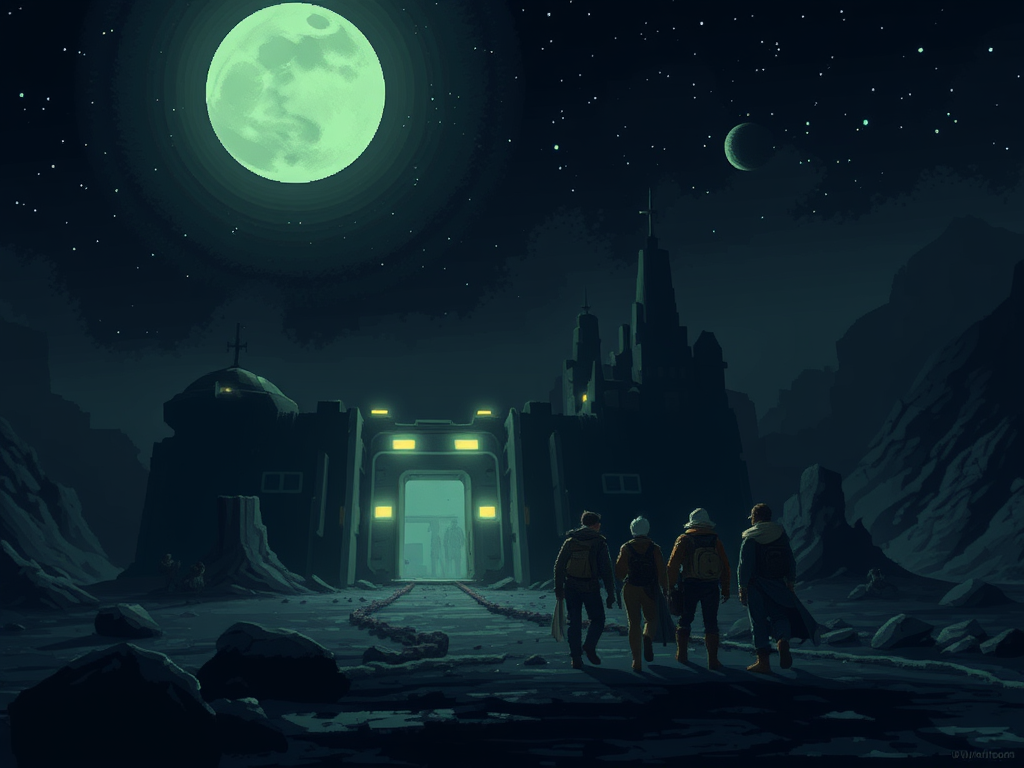Supplement: Quintessential Guide to Monster Encounters
Author: Mr. Tarrasque, Wally DM, Dungeon Dad, JVC Parry
Publisher: Self-Published
System: Dungeons & Dragons, Fifth Edition
Summary: The Quintessential Guide to Monster Encounters is the definitive guide to building, adapting and running monster encounters. Turn your combat into an encounter and tell a story with each fight to keep your players engaged! Combat encounters are more than just fighting bad guys and rolling to hit. The Quintessential Guide to Monster Encounters will provide thoughtful insight on how to include additional elements, strategies and ideas to make your sessions meaningful and memorable. Who says your party isn’t strong enough to fight a dragon? Why couldn’t a horde of Orcs be a threat to a party of 12th level adventurers? There are countless ways to keeping your players engaged, and we are here to give you the tools. Every encounter features original monsters with unique mechanics. Complete with artwork, stat blocks, lore and everything you need to have an epic game night. As a bonus, we might have thrown in some magic items here and there.
Snap Judgement for Busy Wyverns: What do you get when you mix in 3 D&D-Tube powerhouses and a veteran designer? A book of pretty damn good set-piece encounters. These are not your typical, vanilla monster manual encounters either – lots of creativity and thought have been thrown behind these. We don’t think any are the kind of thing to base a campaign around, but many are fantastic diversions to throw into your campaign. While any GM can always use more monsters/encounters/adventures – these entries are particularly useful for newer GMs that want to get concrete lessons in tuning difficulty. If you’re looking for a book full of fleshed out (literally, in the case of the Asfaraba and the Memory Thief) ideas, put this directly on your bookshelf.
What is it?
This PDF book is 132 pages of detailed set-piece encounters. Everything you need to run them is in here – stat blocks, backstories, tactics, loot, etc. Up front, each of the 4 authors writes a short essay on their GM philosophies and tips. As with most advice, use what speaks to you and nod with the rest – every GM is different, and these 4 essays are all valid and interesting viewpoints on encounter running. We found much to agree with, and some to disagree with – but the kind of disagreement you discuss over a meal and a beverage, not the kind you get out pitchforks for. Next up, 26 encounters usually running for about 4-6 pages, and then some appendices – including a 2-page rules supplement on jousting. We don’t want to comment too much on these, except to say that they look well organized and at least somewhat rooted in real-world medieval jousting etiquette. Would they make for fun and engaging gameplay at the table? Of that we’re not sure, but these are worth a try if you have a jousting scenario in mind. (Or just run the delightfully whimsical Treant Tournament in this book!) We read this book wishing each encounter had the author listed, or perhaps they all collaborated? But then, patience led us to page 127, Appendix A – Encounters by Author. Phew! Looking over the list, we saw that our “favorites” from reading the book were scattered about, and that no one author dominated the work.
What Makes It Good?
We love having encounters, adventures, lairs, monsters, treasures available at the drop of a hat. Our GM anxiety is always that we won’t have any ideas to run come game time! And so our GM anxiety manifests in us obtaining every collection of encounters, adventures, lairs, monsters and treasures we come across. We have so many we can’t even organize them – but that’s a wholly different problem.
When it comes to this collection of encounters – these aren’t just one-paragraph prompts, but they’re also not full-fledged adventures. They’re somewhere in between, like a book of lairs. These encounters do not necessarily occur in a “lair” though, so be confident that you’ll be able to drop them nearly whole-cloth into your campaign. These are all written to be scalable to the party level at your table – you don’t have to worry too much about them being too easy or two hard. And if you’re not comfortable scaling an encounter – well this IS the book for you, since lots of ink is spent talking about how to scale the encounters. After reading a few, and certainly after running a few, you should have that skill well on the way to mastery. In this book, scaling is NOT an exercise left to the reader, and that’s a really good thing for newer GMs. Each adventure is rated up front on a 6-point scale of “GM Complexity” – 3 circles but half-values are used. This is another neat feature, letting newer GMs know when an encounter might be a little more fiddly than some of the others. Many of the encounters have the usual end-state – all monsters dead – but each one also has a short discussion about what happens at that point, or what it might look like for alternative end-states. This is another great learning tool for newer GMs – there are sometimes other ways to win than just bashing the opponents into submission. Having these alternative win conditions keep the game much more interesting and engaging for players who might like to think through a problem than just charging in, halberds blazing.
How Do I Use It?
Running encounters like this is not a complicated affair – but it can (rightfully) be daunting to newer GMs nonetheless! The more experienced among us often forget about all the things we’ve internalized as good practice and have become habits. This book helps give structure to those habits that some may not yet have learned. Each encounter goes over the Scene, the Setup, the Threat, how to Start the Encounter, Tactics, and Ending the Encounter. Also provided are lots of breakout boxed text full of tips, further motivation for NPCs, faction descriptions and the like. Every encounter shares the same general outline, which makes reading all of them easier from start to finish. For the 4 authors to all adhere to this organizational structure was a really solid choice.
Downsides
Most of the downsides in an anthology like this are going to be opinion-driven: perhaps you won’t really like any of the monsters, or none of them will fit your game. It’s unlikely with 26 to choose from, but it’s possible. Maybe you’ll run one or two and the tips and advice on scaling just won’t work with your thought processes. These sorts of things are possible with any supplement though, and not unique to this one.
However, there is one thing that might cross up experienced GMs – the handholding done in every encounter around scaling. There’s a lot of words in each one, to teach GMs how to do it, that you just may not need to read. Or after you’re read it once or twice, you “get it” – but still have to read it in prose format for 24 more encounters. And that’s fair – but you’re not the target audience here! Feel free to just skip past what you don’t need! (And if you ever do need a refresher – it’ll be there for you!)
Final Thoughts
Take a second and go back up to the publisher line above. Self-published. These four friends came together and worked their tails off (we assume) to put out this creative endeavor. They had no company backing, no editorial staff, no dedicated layout designer. There’s some custom art here, and some stock art from stock art professionals. It’s good art. It all fits. They paid for that with their own money, not a corporate fund. Some might say they took a risk on this, but we say there was no risk here, because they clearly did not do this to get rich.
They did this because they are creators who need to create. They did this because they absolutely want to help more of YOU become GMs, or become better GMs. And hey, that’s why we write this blog too. But creating is much, much harder – and soul-baring – than reading and reviewing. Always remember that.
They did all this and they did well. This is a good encounter book, with lots of weird, strange, sometimes scary but always interesting setups. Most of all, they’ll be fun to run at your table, and you’re going to run them well because they gave you all the hints and tools they had to help you.
Recommend or Not?
If you’re a long-time or forever GM, we know you’re always looking for more encounters. For you, it’s a Recommend.
If you’re a new or fledgling GM, and you’re looking to learn how to run set-piece encounters or lairs better, and how to scale them (sometimes on the fly!) – this is a Strong Recommend. You’ll learn a lot from here and these authors. Most of them are very accessible on YouTube, Discord or Social Media and are probably happy to answer any questions you might have. When else are you going to have the opportunity to talk to the designer about the product with that level of access? That alone is something special.




